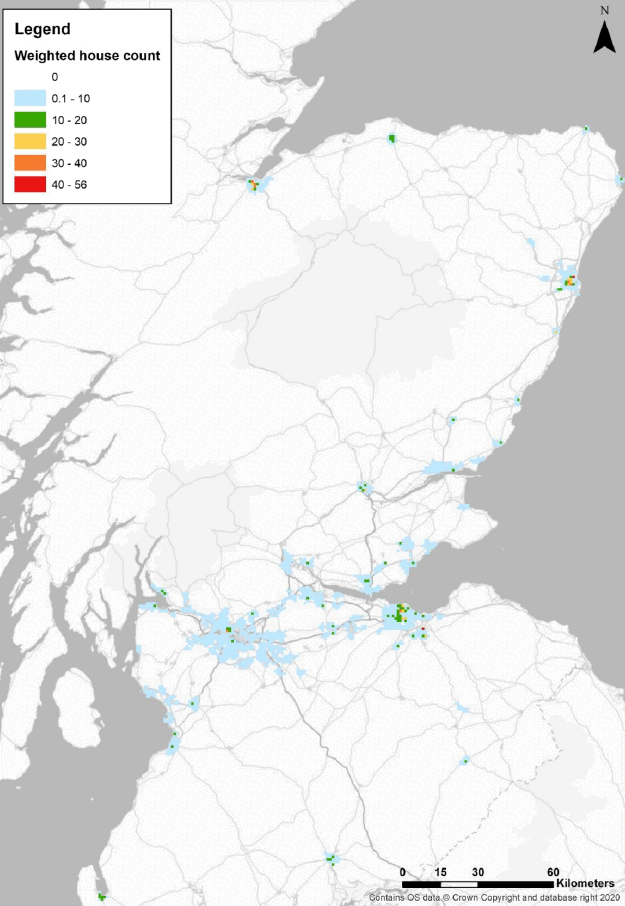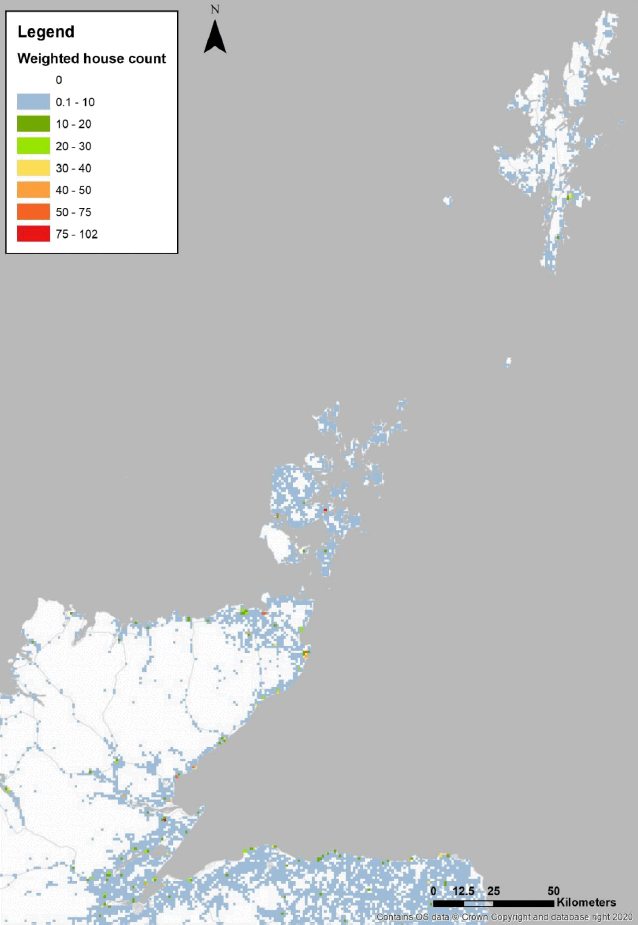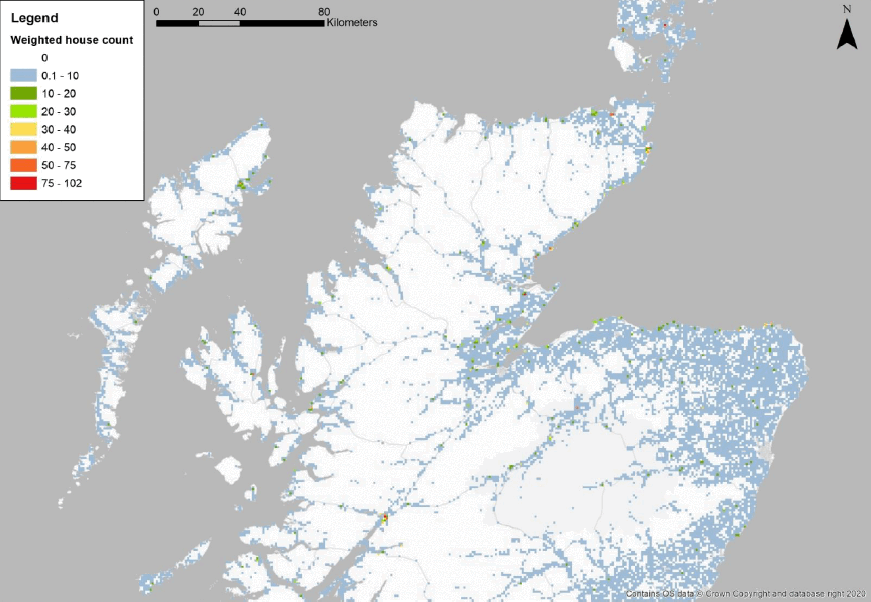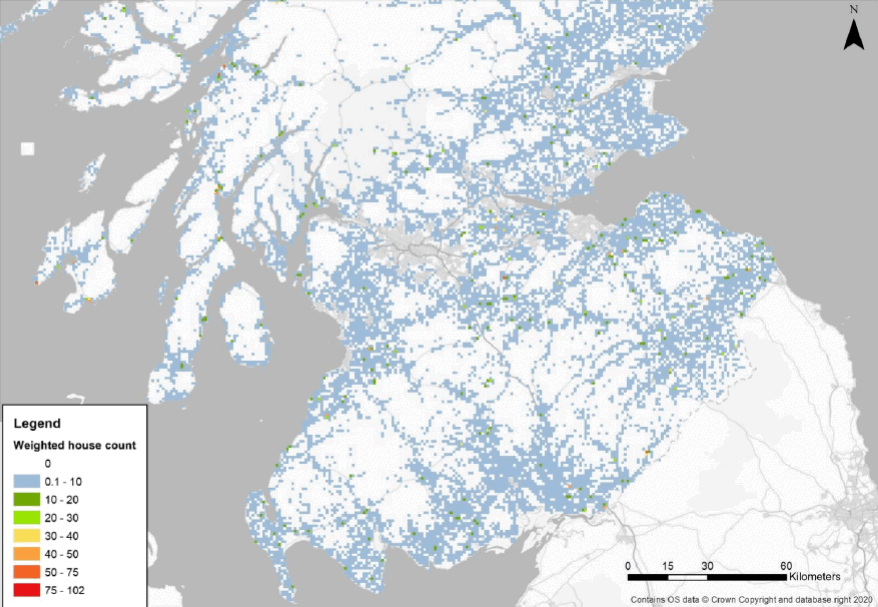Impacts of the sale of house coal and the most polluting manufactured solid fuels: report
We commissioned this evidence review to inform proposals for introducing a ban on the sale of house coal and high sulphur content manufactured solid fuels in Scotland.
Appendix 3 Spatial distribution of solid fuel use
This section includes maps to support Section 3.3.3.
The number of households using solid fuels based on the Home Analytics dataset, split by urban/rural classification, was used to distribute the total PM2.5 emissions spatially across Scotland in a 1 km2 emissions grid. The number of households using solid fuels as a primary fuel type was added to 10% of the houses using solid fuels as a secondary fuel type; this weighting reflects the estimate that a secondary fuel would provide 10% of the heat in a property[44].
The figures below display the weighted house counts per 1 km2 across different regions of Scotland. Remote towns such as Fort William and Kirkwall have the highest weighted counts per 1 km2 as many households use solid fuel as the main fuel. Aberdeen has the highest weighted count per 1 km2 in urban areas as it has high numbers of properties using solid fuels as a secondary fuel type.




Contact
Email: airquality@gov.scot
There is a problem
Thanks for your feedback